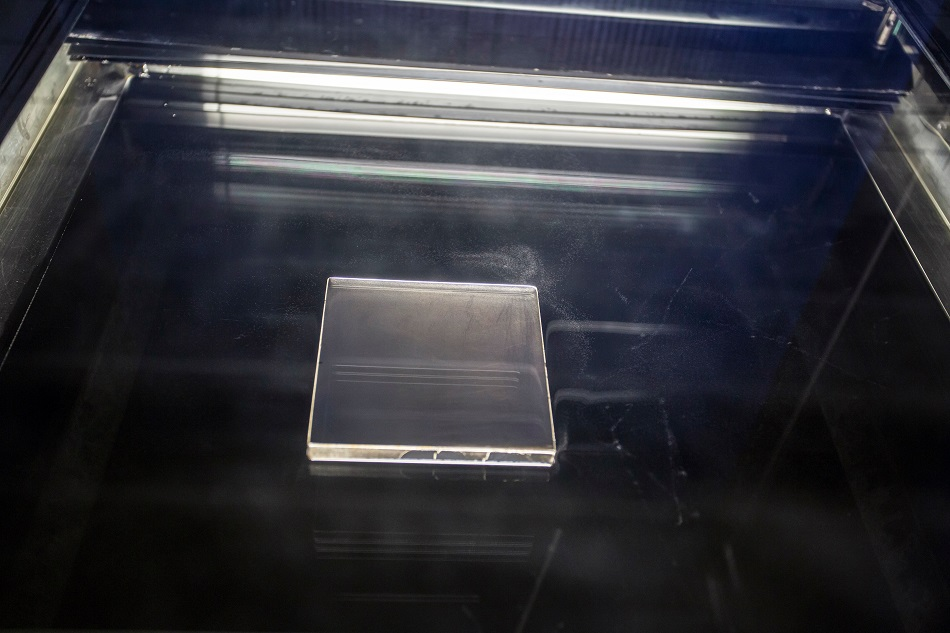By Kalwinder KaurJun 26 2013

Image Credit: Marben/Shutterstock.com
A Wilson chamber or cloud chamber is used for the detection of ionizing radiation particles. Ionizing radiation includes electromagnetic waves or particles that have enough energy to separate electrons from molecules or atoms. This is referred to as ionizing the particles.
A Wilson cloud chamber in its most basic form is a sealed environment with supersaturated alcohol or water vapor inside. The mixture is ionized when an alpha or beta particle interacts with the mixture.
The resulting ions behave as condensation nuclei enclosed by a mist. The high energies of alpha and beta particles create a charged particle path.
The paths of particles that are emitted due to radioactive decay are seen in a cloud chamber. The cloud chamber gained popularity due to the discovery of the first observed form of antimatter, the positron.
The following video includes a brief demonstration by Dr. Peter Wothers from the University of Cambridge showing how a cloud chamber works.
Cloud Chamber: The Birth of Helium Atoms
Research
Charles Thomsan Rees Wilson, a Scottish scientist, discovered the cloud chamber which later became named for him, with the first cloud chamber perfected in 1911. The original chamber had the air in the sealed device saturated with water vapor. The air inside the chamber was expanded by adiabatic expansion. The water vapor and air then began to cool and condense.
The passage of an ionizing particle through the chamber causes the water vapor to condense on the ions it has contact with and thus the particle trail carried in the vapor cloud. Wilson and Arthur Compton won the Nobel Prize in Physics in 1927 for their work on the cloud chamber.
In 1957, an unnamed National Advisory Council on Aeronautics (NACA) physicist placed great focus on the behavior of alpha rays in a continuous cloud chamber. Scientists at the Glenn Research Centre, previously known as the Lewis Research Centre, used the cloud chamber to obtain information that helps us to understand radiation impact on nuclear-powered aircraft components.
In this case, alpha particles are emitted from a polonium source at the center of the cloud chamber. The particles are seen by alcohol vapor diffusing from an area at room temperature to an area at -78 °C.
The recently built cold room facility in the Simon Building of the University of Manchester, UK, is home to a 10 m high cloud chamber, one of the tallest in Europe. The fall tube has a 1 m diameter and reaches temperatures as low as -55° C.
This chamber can be manipulated using a pressure seal and evacuated to recreate conditions similar to the upper troposphere.
Mixed phase, liquid water or glaciated clouds are produced in this chamber that mimics what can be found in a natural environment. The chamber is also provided with probes and sensors. Most of the probes are present at the base of the sample falling cloud hydrometer and cloud chamber.
Applications
Cloud chamber research can be used to study the following:
- Ice crystal light scattering
- Aggregation and nucleation
- Thunderstorm electrification and cloud microphysics
Future Developments
Innovative research has witnessed the design of the cloud catcher that can function in real-time. The cloud catcher is a visual recognition to sound interface. A camera placed above this cloud chamber follows the tracks of the particle and converts the same into synthesized music that accompanies the violin.
A human violinist performs and an amplified version of the violin music is sent to an electromagnetic field system present close to the particles. The playing of the violin creates a variable force field in the chamber, influencing particle behavior.
Sources and Further Reading
This article was updated on 14th February, 2020.
Disclaimer: The views expressed here are those of the author expressed in their private capacity and do not necessarily represent the views of AZoM.com Limited T/A AZoNetwork the owner and operator of this website. This disclaimer forms part of the Terms and conditions of use of this website.